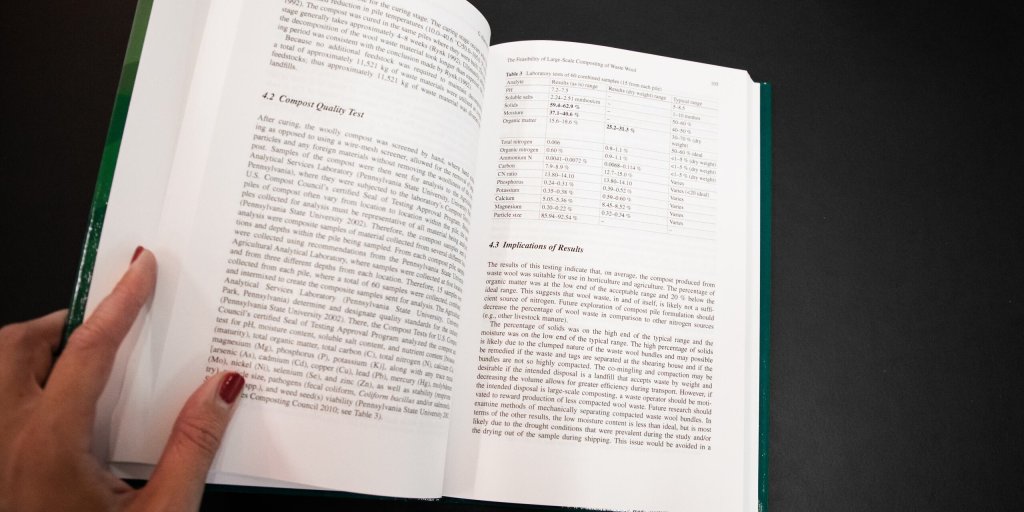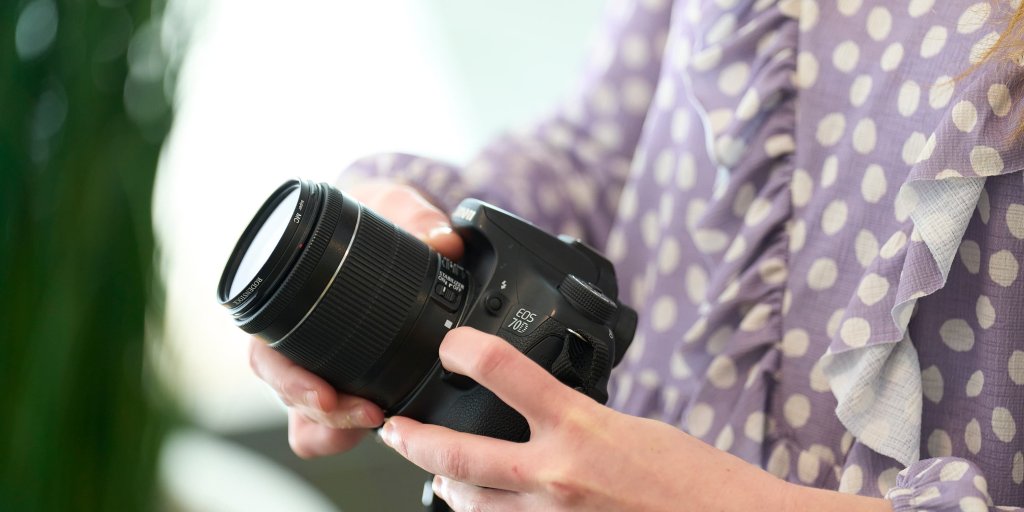References
Where does the information come from?
It is important that you keep track of your sources when you write an assignment. It must be quite clear when you are including the work of others in your text. This is a guide for how to cite sources in study assignments.
Cite the source
How do I cite a source correctly?

Sources may be cited in many ways. The most important thing is that you are consistent. Be aware, however, of any standard of referencing preferred by your teacher/study programme.
One of the most popular referencing standards is Harvard. If you use the Harvard referencing standard, citations must appear directly in the text and include the author name(s) and year as well as page number(s), unless you are referring to the entire book.
So, if you choose Harvard, your references will not be in the form of foot notes, but rather integrated like this:
As an entrepreneur, you will undoubtedly meet challenges; competitors on the market, recession and lack of capital. But if you want to be successful, you have to put your head into the lions mouth and take risks (Churchill, 1900, p. 388)
You may also cite your source as an even more integrated part of your text:
As an entrepreneur, you will undoubtedly meet challenges; competitors on the market, recessions and lack of capital. But according to Winston Churchill (1900, p. 388), you must put your head into the lion's mouth if the performance is to be a success, so taking risks are part of the game.
Sometimes it is a good idea to use a direct quotation, in particular if the quotation is so precise, brief and clear that it may be difficult to rephrase. The quotation must be in quotes followed by the name of the author(s). If the quotation is longer than 3 lines, indent it from the rest of your text. When you cite a source, make an exact copy of the quote. Do not attempt to correct the spelling or punctuation. In addition, you must always make it clear if a citation has been translated.
“The general must not be afraid to brave disaster. But how tolerant the arm-chair critics should be of men who try coups and fail! You must put your head into the lion's mouth if the performance is to be a success.” (Churchill, 1900, p. 389)
Each time you cite a source in your text, you must include the full citation in your bibliography. In other words, it must be easy for the reader to see the citation in the text and find the full citation in the bibliography.
Bibliography
How do I make a correct bibliography?

Your bibliography is a list of all the sources you have used in your assignment. The bibliography should only contain the sources that you cite in your assignment. Sources that are cited more than once should only be listed once in the bibliography.
Your bibliography should be placed at the end of the assignment, typically on the page after the conclusion. The list must be set in alphabetical order by the surname of the author. You should not categorize the list by document type.
There is a difference between the way a book, an article or a website are written in the bibliography:
-
Books
- Author/editor (add (ed.) after the name if it is an editor) (More than one author? Check the FAQ below)
- Publication year
- Title (in italics)
- Serial title and number (if the book is part of a series) *
- Edition (if not the first edition) *
- Place of publishing (if there is more than one, use the first)
- Publishers
- Page number/chapter*
* = if applicableExamples of citations...In the textTheories of science arose in the Renaissance in the aftermath of the weakening of the church (Okasha, 2016, p. 33)
In the bibliographyOkasha, Samir. 2016. Philosophy of Science - a Very Short Introduction. 2nd. ed. Oxford: University Press.
-
Chapters or articles in books
- Author of the article/chapter (More than one author? Check the FAQ below)
- Publication year
- Title followed by in:
- Editor (always place (ed.) after the name*
- Title of the book (in italics)
- Serial title and number (if the book is part of a series)*
- Edition (if not the first edition)*
- Place of publishing (if there is more than one, use the first)
- Publishers
- Page number/chapter*
* = if applicableExamples of citations...In the textA company should set some strategic goals to ensure a favourable position in relation to the five threats (Porter, 1989, p. 140)
In the bibliographyPorter, M. E., 1989. How competitive forces shape strategy i Asch, D., Bowman, C. (ed.) Readings in strategic management. London: Macmillan. pp.133-143
-
Articles from newspapers and magazines
- Author (More than one author? Check the FAQ below)
- Year of publication
- Title of article
- Newspaper/magazine title (in italics)
- Release date
- Page number
Examples of citations...In the textArchitects worldwide are taking inspiration from ancient building methods (Kaye, 2012)
In the bibliographyKaye, L. 2012. Traditional architecture offers a strong foundation for green building in: The Guardian : Built Environment. 15. January, p. 14.
-
Articles from journals
- Author(s) (More than one author? Check the FAQ below)
- Year of publication
- Title of article
- Title of the journal (in italics)
- Volume number
- Issue number
- Page number
Examples of citations...In the textThere is no simple linear causality in the relationship between education and social change (Sterling et al., 2018)
In the bibliographySterling, S., Dawson, J., Warwick, P., 2018. Transforming
Sustainability Education at the Creative Edge of the
Mainstream: A Case Study of Schumacher College in Journal of Transformative Education. Vol. 16, iss. 4, pp. 323-343. -
Websites
- Author/editor (use business/organisational name if no unique author has been mentioned) (More than one author? Check the FAQ below)
- Year of publication (if no precise date has been mentioned, use n.d.)
- Title (in italics)
- URL
- Retrieved (date)
Examples of citations...In the textIf you are involved with close-range work, you have an increased risk of developing shortsightedness (Bek, 2016)
In the bibliographyBek, T. 2016. Nærsynethed. [Online] Available at: https://www.sundhed.dk/borger/patienthaandbogen/
oejne/sygdomme/brydningsfejl/naersynethed/. [Retrieved on 13 November 2017]
-
Social media
- Author/initials (use business/organisational name if no unique author has been mentioned) (More than one author? Check the FAQ below)
- Year of publication (if no precise year has been mentioned, use n.d.)
- Title (in italics)
- Social media type (Facebook, Twitter etc.)
- URL
- Retrieved (date)
Examples of citations...In the textKEA has, apart from turning digital with regards to teaching, also turned to digital social activities (KEA, 2020)
In the bibliographyKEA Copenhagen School of Design and Technology, 2020. Helena savner sine medstuderende, undervisere og livet på KEA. [Online] Available at: https://da-dk.facebook.com/kea.dk/. [Retrieved on 02. June 2020]
-
E-Books
- Author/editor (add (ed.) after the name if it is an editor) (More than one author? Check the FAQ below)
- Year of publication
- Title (in italics)
- Format (e-book)
- URL
- Retrieved (date)
NB: E-books usually do not contain page numbers. Therefore, when you refer to a specific section or citation from an e-book, you must refer to the chapter.
Examples of citations...In the textThe transition to adulthood has become more complex in line with globalisation and a change in expectations for future working life (Lloyd, 2005)
In the bibliographyLloyd, CB (ed.), 2005. Growing up global: The changing transitions for adulthood in developing countries. E-book. http://www.nap.edu/books/11174/html/index.html. [Retrieved on 5 May 2017]
-
Standards
- Author (More than one author? Check the FAQ below)
- Standard number
- Year
- Title (in italics)
- Publisher
Examples of citations...In the textToys that produce high impulse sound levels must be provided with a specific warning (Danish Standard, 2018)
In the bibliographyDanish Standard. 2018. DS/EN 71-1:2014+A1:2018. Legetøj – Sikkerhedskrav – Del 1: Mekaniske og fysiske egenskaber. Danish Standard.
-
Reports
- Author (name of the author if specified, otherwise the organisation is written as author) (More than one author? Check the FAQ below)
- Year
- Title (in italics)
- URL
- Retrieval date
Examples of citations...In the textDanish consumers have an increasing interest in locally produced and organic food (Euromonitor International, 2018)
In the bibliographyEuromonitor International. 2018. Consumer Lifestyles in Denmark. [Online] Available at: http://www.portal.euromonitor.com/. [Retrieved on January 15th 2018]
-
YouTube
- Profile Name (the profile which uploaded the video)
- Upload year
- Video title (in italics)
- URL
- Retrieval date
Examples of citations...In the textProcrastination can foster more creative solutions (TED, 2016)
In the bibliographyTED, 2016. The surprising habits of original thinkers | Adam Grant. [Online] Available at: https://www.youtube.com/watch?v=fxbCHn6gE3U. [Retrieved on January 15th 2018]
FAQ
Citing sources can be tricky and sometimes leave you with doubt. You can find answers to some of the most common questions in the FAQ:
What if..
-
There are more than two authors?
If there are two authors, include both surnames in the reference. If there are three or more, indicate the first author's surname, initial, and type et al. as an abbreviation for the remainder. For example: (Mogensen, P. et al., 1990)
NB: In the bibliography, you must include the names of all the authors.
-
There is no author?
Write the name of the institution where you would otherwise write the surname of the author.
For instance: (Red Cross Denmark, 2017) -
I need to add an appendix?
An appendix can be anything from an interview (interview guide, transcription, notes, sound clips), to questionnaires, graphs, calculations, articles etc.
You refer to the appendix in the text (f.ex. (see appendix 3) and make a full appendix list after the bibliography.
Remember to add the actual appendices as the last part of the assignment.
-
I don't have the original source
- If possible, always use the original source. If it is not possible to retrieve, you can use a secondary reference.
- Check the type of source on this page, to see relevant elements
Examples of citations...In the text without quoteTheories of science arose in the Renaissance in the aftermath of the weakening of the church (Beck Holm, cited in Jønnson, 2020)
In the text with quoteAs Beck Holm writes:"Theories of science arose in the Renaissance in the aftermath of the weakening of the church". (Beck Holm, cited in Jønnson 2020, p. 33)
In the bibliographyNB: Cite the source you have read, not the primary source.
Jønsson, A., 2020. Science in the world – The basics 2nd. ed. Oxford: University Press.
-
I am still in doubt...
Come by or contact the library and ask for help.
Images and illustrations
Which images can I use?

When you use other people's artwork and images, it is important to observe the rules on copyright and author’s rights. It is far from all images you may use as you see fit, and many images are protected by copyright.
However, there are image databases you can use free of charge. Try to google images with creative commons rights or use the library database Colourbox. Remember that no matter where you find the images, always double check that they can be used without the author’s permission.
Images and illustrations that are not your own must always be referenced in a separate image list, which comes after the bibliography. Therefore, when you refer to an image in your text, you must specify an image number and, possibly, a caption. The number will help the reader find the full citation and information about the owner in the image list.
Examples of using images in the text:

In the image list, you write the full reference:
Image 1. (Københavns Museum, Christian Rasmus Neuhaus, 1862 – 1894). Photography of Tivoli's main entrance, Copenhagen.
Guidance on referencing the use of AI
How do I reference when using AI?

If you want to use generative artificial intelligence such as ChatGPT, Google Gemini, or Microsoft CoPilot to solve a study assignment, you must always first ensure that it is allowed for that specific assignment. Ask your instructors and teachers. They can inform you about the use of AI in solving your assignment, which may vary depending on the education or type of task. Also, check your curriculum, which contains specific guidelines on the use of aids in your assignment solution.
When you need to find sources for your assignment, it is a requirement to refer to an author, theory, or model rather than an artificial intelligence. It is not enough to simply use answers from an AI as a source. For example, you should use sources such as textbooks, academic books, and scientific literature when describing and applying specific theories and models or when using academic and scientific claims in your analyses and discussions. It is crucial that the reader can trace knowledge back to the original source through references. To avoid plagiarism, it is therefore important that you correctly indicate sources in your assignment.
When solving an assignment, you should always be transparent about your method and process. This also applies when using generative artificial intelligence, where you must be transparent about when and how the technology is used. Further down the page, you can see how you can specifically write this into your assignment.
Be transparent!
If you submit content generated by a generative artificial intelligence and present it as your own, it is considered cheating.
Therefore, you should reference when you, for example:
- Reproduce (quote) or rephrase (paraphrase) AI-generated content.
- Use generative artificial intelligence as a tool to analyze, synthesize, transcribe, write code, or similar.
- Reproduce images you have generated with generative artificial intelligence.
Tools based on generative artificial intelligence fundamentally differ from traditional sources by being generative; they generate new answers for each prompt, and the same prompt can yield different results.
You may consider including prompts and responses as appendices or linking to the conversation in your citation if you have used AI as part of your assignment solution. This may be, for example, if you have used AI to analyze data or create content.
Remember, it is your responsibility to check the requirements for the specific task in the curriculum, in the assignment description, and with your teacher, as there may be special requirements for documentation.
How to reference when using AI
There are many ways to make references, and at KEA there is no adopted standard for referencing. Different programs may use different standards, so always check if there are special requirements for your specific course. Most importantly, you should be consistent and use the same referencing standard throughout your assignment.
See the following examples of how you can refer and cite, for example, ChatGPT, if you are using the Harvard referencing standard:
In the text:
- In the task, I have used ChatGPT-4 (OpenAI, 2024) for idea generation and problem formulation.
- I have used ChatGPT-4 (OpenAI, 2024) for the development of a questionnaire and in the subsequent analysis of empirical data (see Appendix 1 for a transcript of prompts and outputs).
- I have used ChatGPT (OpenAI, 2024) to summarize articles.
- I have used ChatGPT (OpenAI, 2024) to…
- The image was created by DALL-E (OpenAI, 2024) with the prompt 'full moon dance'.
The full reference should be placed in the bibliography and should contain:
Author/Company. Year. Name of AI model (version). Date located*. URL*
* include if relevant
In the bibliography, it would look like this:
Here you should adjust the date, year, URL, and version to match what you have used.
How to reference AI generated images
If you are using images created with generative artificial intelligence, the illustration text should specify which language model and prompt were used to create the images.

Image 1: Generated by DALL-E with the prompt ”eco-friendly”
NOTE: When using images, sound, or video made with artificial intelligence, you must be aware of the licensing conditions for use on the platform. These are not the same for all and affect how you may use the image, for example, whether you are permitted to use it commercially on websites, in graphic materials, etc.
If you are unsure whether a reference is necessary, it is better to refer one time too many than one too few.
Learn more about the rules for using AI in the Exam rules at MITKEA.
Tools
How can I keep track of my references?

Digital tools can help you manage citations in your assignment. Using these tools not only ensures consistent and clear citations, it can also enable you to generate your bibliography with a single click.
You can use Word’s reference functionality or choose a standalone program for the job. Both solutions have pros and cons, so choose the one which meets your needs the best.
References in Word
Videoguide til words indbyggede referencefunktion
Word has native support for managing references and generating bibliographies. Watch the video to get started using references in Word.
Standalone applications
Another option is to use a standalone application for organising and citing your references. These programs allow you to organise, collaborate and share your references within your study group. Furthermore, you can use plugins to integrate with other programs and hence get reference functionality in Google Docs and save articles directly from your browser.

